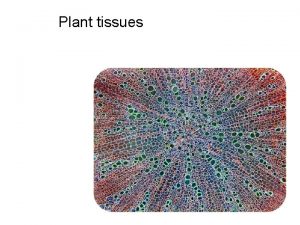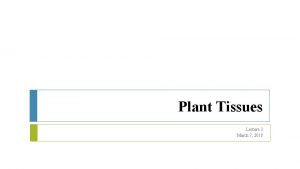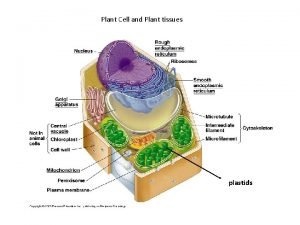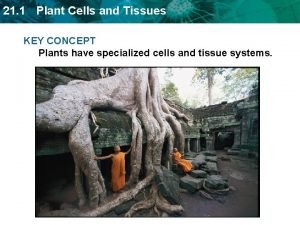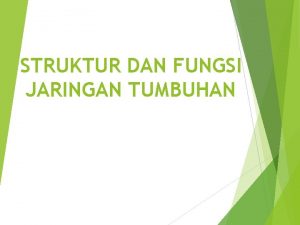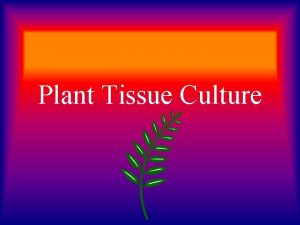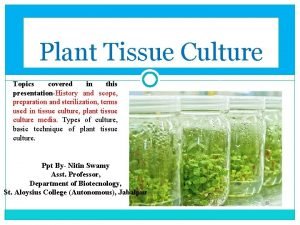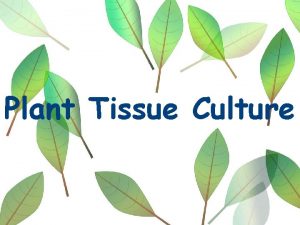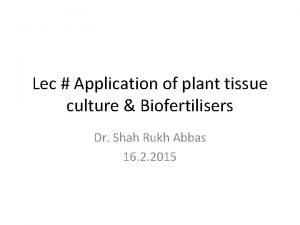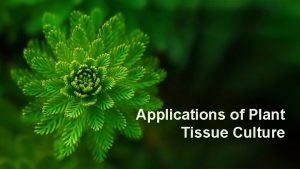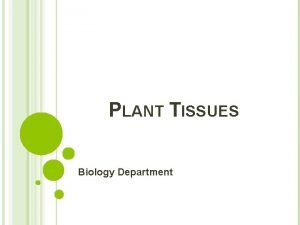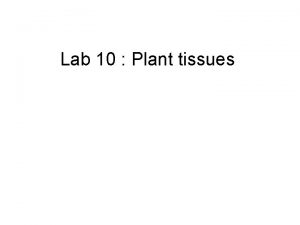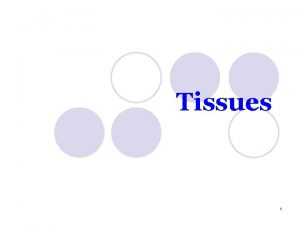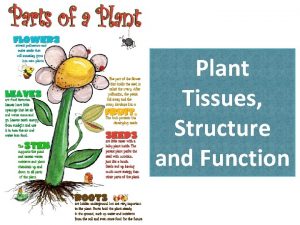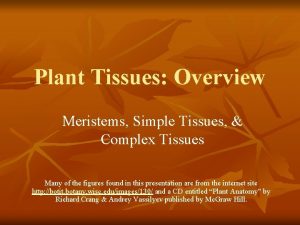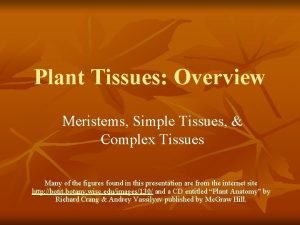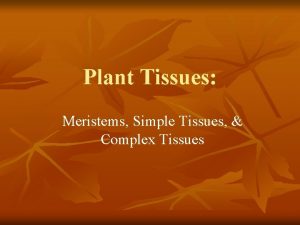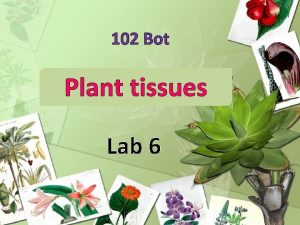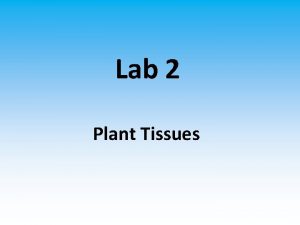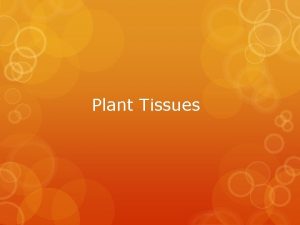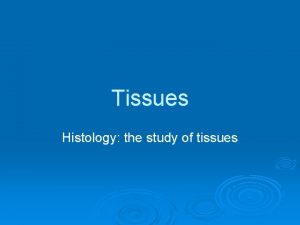Plant Structure Plant Tissues A tissue is a
















- Slides: 16

Plant Structure

Plant Tissues • A tissue is a group of cells organized to form a functional unit or a structural unit • Plants have 3 tissue systems: • Ground tissue (3 types) • Vascular tissue (xylem and phloem) • Dermal tissue (exterior)

Ground tissue • Parenchyma - found throughout the plant, these tissues perform important functions like photosynthesis • Colenchyma - structural support in herbaceous plants • Sclerenchyma- hard structural support (trees)

Parenchyma • Simple tissue found throughout the plant. Functions include photosynthesis, food storage, secretion

Collenchyma • Provides structural support • Found just under the stem epidermis and along leaf veins • Cells are alive at maturity and function only when they are alive

Sclerenchyma • Hard structural support • may be alive or dead and still function structurally • one type of sclerenchyma is fiber (wood)

Xylem and Phloem • Both add structural support • Xylem - conducts water and minerals, long tapering cells that act as pipes of a sort • Phloem - conducts food

Dermal • Epidermis - outermost layer composed of single layer of ground parenchyma cells • Periderm - many layers thick, found on woody plants, replaces epidermis, parenchyma cells

Growth • Plant growth occurs at specialized areas called meristems (meristematic tissue) • primary growth - increase in length of plant, occurs at apical meristems, • secondary growth - increase in girth, occurs at lateral meristems, vascular cambium (see figure 26 -16, pg 519)

Stems

Leaves

Leaves • Arrangement on stem -pg 509 • • alternate opposite whorled Large surface area to collect light and allow for gas exchange but increases tendency for water loss - cuticle reduces water loss • Hairs on leaves are called trichomes

Leaves • Cuticle is thicker on the top of a leaf than it is on the bottom • Stomata - opening controlled by guard cells. More stomata on bottom of leaves • Mesophyll- photosynthetic tissue of leaf • Xylem and phloem pass through mesophyll (xylem toward the top and phloem toward the bottom)

Mesophyll • Palisade layer - cells stacked more closely together, toward the upper epidermis, primary site of photosynthesis • Spongy layer - cells more loosely organized, toward lower epidermis, some photosynthesis, but primarily engaged in gas diffusion within the leaf

Monocots and Dicots see page 529

Leaf function • Photosynthesis - more later • Transpiration - 99% of water absorbed by plant is lost by transpiration • Guttation- available water is high, transpiration is low • Abscission-allows plant to shed leaves
 Body tissues chapter 3 cells and tissues
Body tissues chapter 3 cells and tissues The 4 tissues
The 4 tissues Body tissues chapter 3 cells and tissues
Body tissues chapter 3 cells and tissues Cells form tissues. tissues form __________.
Cells form tissues. tissues form __________. Stained cheek cell
Stained cheek cell Primary meristem
Primary meristem 3 tissues of a plant
3 tissues of a plant Plant tissue and organs
Plant tissue and organs Plastid in plant cell
Plastid in plant cell Cohesion bond
Cohesion bond Perforation plates
Perforation plates Jaringan tumbuhan peta konsep
Jaringan tumbuhan peta konsep Plant tissue culture terminology
Plant tissue culture terminology What is callus culture
What is callus culture Anther culture
Anther culture Plant tissue culture application
Plant tissue culture application Purpose of plant tissue culture
Purpose of plant tissue culture





